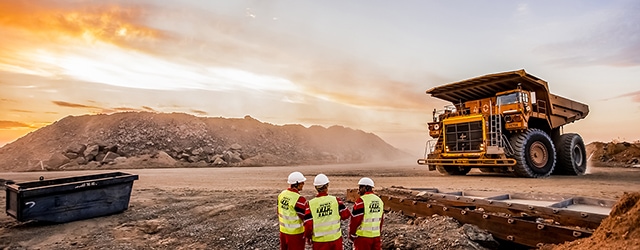Technology is raising old metals to new highs. Africa has them all.

For centuries, gold and diamonds were focal points in the global contest for dominance in Africa. Now, electric vehicles have made cobalt and lithium, essential for batteries, into prized commodities as well.
Cobalt has been used for years in aircraft turbine engines; drying agents for paints, dyes and pigments; magnetic recording media and steel-belted radial tires. It is also a key component of batteries, which are soaring in importance with the emergence of electric vehicles.
The Democratic Republic of the Congo (DRC) alone produces nearly two-thirds of the world’s cobalt and has massive untapped reserves of lithium. This makes the DRC Africa’s principal link in the supply chain for the electric-vehicle industry. It is not alone. Morocco, Madagascar, Botswana, South Africa, Zambia and Zimbabwe also produce cobalt—albeit in vastly smaller quantities.
But African nations also have meaningful resources of other metals rendered newly valuable by new applications. Zimbabwe is among the top producers of lithium, and Mali has identified untapped reserves. Other battery materials, such as graphite—used in high-temperature lubricants and friction materials as well as batteries—are also found in Africa. Madagascar and Mozambique are among the world’s top 10 producers.
“Africa is critical to the short- to medium-term growth of the electric-vehicle industry,” says David Merriman, manager of battery and electric vehicles materials at research and consulting firm Roskill. With the electric-vehicle market projected to be worth $567 billion by 2025, Africa has the potential to benefit immensely.
Yet so far, Africa is a minefield that has not much benefited the African people. Minerals are the second-largest export category after hydrocarbons, comprising about 10% of total exports. But in most countries, the sector has been on a deceleration. In South Africa, minerals’ contribution to GDP nosedived from 21% in 1970 to 7% now. In West Africa as a whole, the sector’s contribution has sunk to less than 1%, from an average of 5% over the same period. Yet the African Development Bank estimates that mineral resources, if well exploited, have the potential to contribute over $30 billion annually in government revenues over the next 20 years.
A June 2018 report by McKinsey & Company reckons that with no major expansion of mining capacity expected outside Africa, the world will continue depending on the DRC for cobalt, which could increase its share of the global supply to 75%.
Current political realities make that a problem for the industry, however. “The geopolitical environment is crucial to the supply chain,” Merriman comments. The presidential election in the DRC in late December—initially the focus of widespread hopes that Africa’s resource-rich giant would finally enjoy its transition to democracy—was repeatedly postponed and widely declared a farce by outside observers.
“Political instability in the DRC could pose huge risks to supply,” says Gavin Montgomery, director of battery raw materials at energy and metals research and consultancy group Wood Mackenzie.
Historically, the DRC is no stranger to supply disruptions. Most component manufacturers now operate on a just-in-time basis, leaving little stockpiled material to absorb shocks, but without exposing themselves to certain types of loss. “Few consumers are willing to sign longer term agreements with suppliers in areas considered geopolitically unstable,” Merriman says. Foreign investors are also looking warily at ownership disputes, the role of artisanal mining, child labor and changes in mining laws—both actual and potential. A new mining code enacted last year increased royalties and added a 50% windfall profits tax when commodity prices rise 25% above levels in a project’s feasibility study, among other changes.
Of greater concern, particularly for western manufacturers, is China’s deep presence in African mining. Beijing is a major source of direct investment in both operations and infrastructure. And as major buyers of precious metals, Chinese companies are important offtake partners: They secure deals with other Chinese companies to buy the minerals yielded if an exploration pans out. Securing the market in advance makes it possible to raise funds for development. China is also, according to the US Geological Survey, “the world’s leading producer of refined cobalt and a leading supplier of cobalt imports to the US.”



